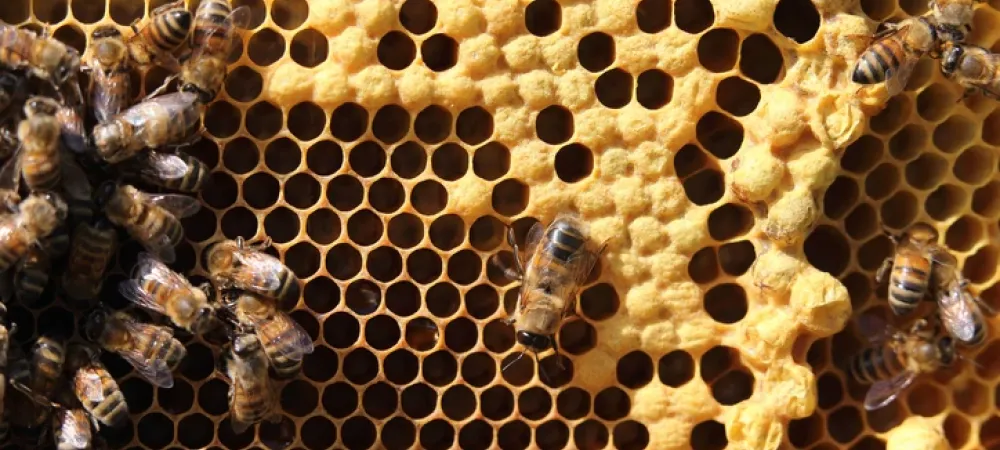Bees! An Amazing Comeback!

We are very well on the way to finding out what caused the Colony Collapse Disorder (CCD) that played a large part in the dramatic collapse of honeybee colonies across the country during the past ten years. Honeybees are responsible for about 15% of pollination here in North America and bees are a vital part of some of our commercial agriculture, so there has been a lot of concern and quite a bit of research into what may have caused this remarkable decline. The good news is that the bees have made a rapid and decisive recovery during the past three years
We still are not certain of all the reasons for CCD, but it coincided with the arrival of the African Honeybees in the mid-nineties. Some of the commercial pollinating companies began losing nearly half of their bee populations during the winter months. They would open a bee box and find only a few bees inside; the whole hive would abandon their home in the middle of winter! There did not appear to be any reason for their leaving … just an empty hive box.
The attack on our sweet-dispositioned European honeybees appears to come from five different directions; four of them are recent, and the other, pesticides, has been with us for the past 50 years.
Five causes of our pollinator problems are:
- Parasites. Chief amongst them is the Varoa Destructor Mite that rages through the hive feeding on developing honeybee larvae. Another type of mite will attack the carapace of the adult bee and a tiny louse can feed on adult bees as well. These mites and lice are active in our bee hives here in the semitropical climate of North County and are the biggest problem that our local bees normally encounter.
- Diseases. Beekeepers are fighting a disease that causes bees to lose their ability to find their way home and weakens them so that they cannot work as hard as “busy” bees are expected to work. Beekeepers and researchers are always on the lookout for diseases that threaten our bees.
- Hybridization. The mix of different bee species sometimes causes fertility issues with new queens and confusion in the hive because of larvae and egg placement and care.
- Pesticides. Materials that we use on our crops and gardens to control bugs can also cause a lot of problems for bees if they are applied when the crop is flowering or if they are used in an irresponsible or illegal manner. Some very outspoken writers and activists are blaming a class of pesticides for the CCD, but the fight against neonicotinoids is sidetracking our efforts from the more serious problem.
- Instincts. Tropical bees do not have an instinct to prepare for winter, so they often do not make and store enough honey to get through the winter. They are very good at building up large populations because the tropical bees are used to being under attack in their native rain forrests and on the African veldt. They are quick to defend their hives and they are very aggressive in breeding and in all that they do. African bees and Africanized (hybrid) bees are excellent pollinators; they are tough, resiliant, and travel well. The African queens also lay eggs half again faster than European queens so their colonies grow faster and spread more rapidly than their more staid European counterparts.
There has been a remarkable increase in honeybee swarming activity during the past fifteen years primarily because of the introduction of tropical bees, including the deadly African honeybees. Often known as “Killer Bees ”, the African variety was first introduced into South America by researchers who were trying to improve the pollinating productivity of European honeybees. Researchers and bee handlers are still doing such research here in the US and one of the byproducts of that research is empty bee boxes in the wintertime. The tropical bees will want to move if a box gets too cold. Their instincts do not drive them to prepare for or endure a cold winter.
Look down! European bees do not like to locate their hives where they might be threatened by snow or ice but African and hybrid bee colonies are very comfortable close to the ground; you want to be especially careful when you see bees coming and going from under a shed, in a valve box (pictured), or a water meter, because they could be very dangerous. Well-established hives are more likely to be aggressive than new swarms because they have a hive and brood to protect. They have been known to attack in great numbers and they can be deadly to pets and to people who cannot outrun them! Don’t jump in the pool! Bees can fly longer than you can hold your breath.
Honeybee swarms are pineapple-sized clumps of bees that surround a queen bee while they are searching for a new home. Bee swarms that stop on a tree branch to rest for a few hours should be left alone as long as they are not a danger or a liability. They usually leave on their own. If the swarm is large enough, it can be recovered by a local beekeeper. Just give us a call for a referral to a person who loves bees and will save the hive for honey production … this should NOT be expensive!
If you have a honeybee swarm or a hive on your property here in North County, please give me a call and I will advise you over the phone. Often the colonies can be rescued safely.